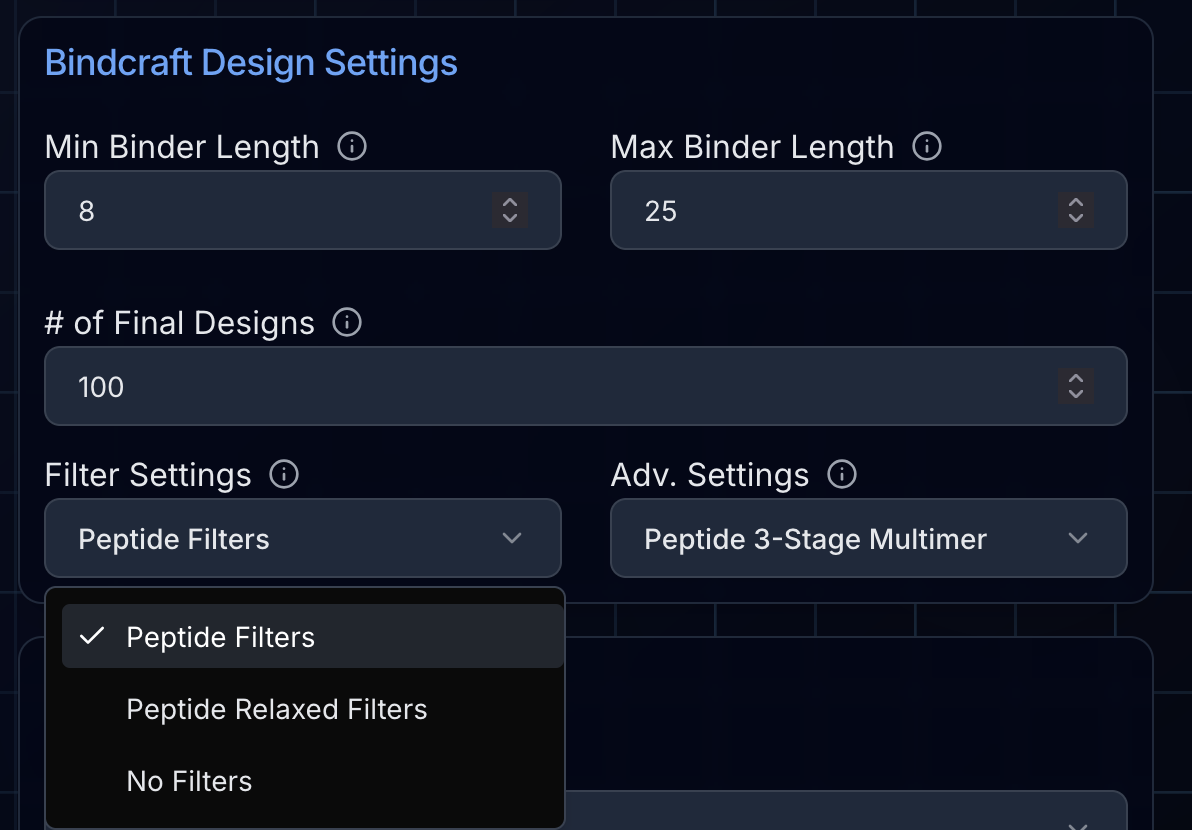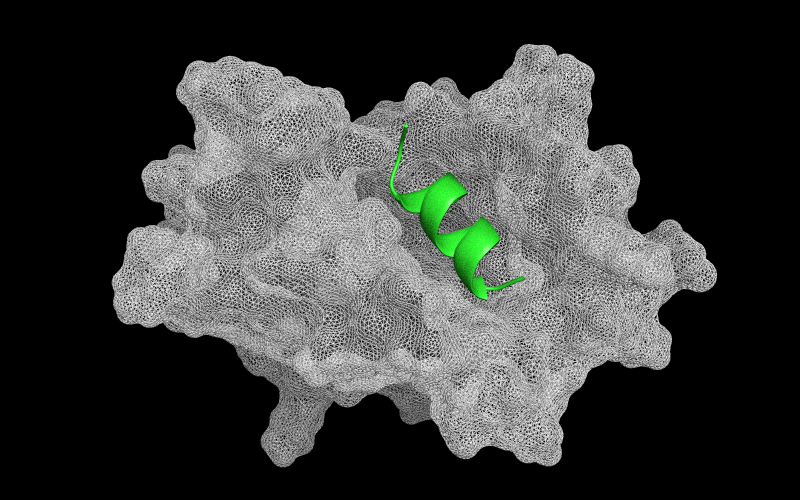Note: For this tutorial, we invited BindCraft's developer Martin Pacesa to share his insights on peptide design with the platform.
We previously covered how to design miniprotein binders using BindCraft, showcasing this powerful tool's ability to create novel proteins in the 60-200 amino acid range with remarkable success rates. But what about shorter therapeutic peptides?
While de novo miniproteins represent an exciting new frontier enabled by AI-powered design tools, peptides have been therapeutic mainstays for decades. From insulin to GLP-1 agonists, peptide drugs are key therapeutics for diabetes, metabolic disorders, cancer, and numerous other disease conditions. Their advantages are clear: they're synthetically accessible, can effectively modulate protein-protein interactions that are inaccessible to small molecules, and increasingly can be engineered for cell permeability and metabolic stability. Yet they've historically required laborious screening campaigns to discover.
Now, groundbreaking new research shows that BindCraft, originally validated for miniproteins, can design functional peptides with remarkable efficiency.
Independent Validation of Peptide Design Capabilities
In a recent preprint, an independent research team put BindCraft to the ultimate test: could it design short peptides (10-20 amino acids) as effectively as miniprotein binders?
The results were striking:
- MDM2 (p53 regulator): 7 out of 15 tested peptides bound with KD = 65-165 nM
- WDR5 (chromatin remodeler): 6 out of 9 peptides achieved KD = 219-650 nM
These therapeutically relevant affinities were achieved without any experimental optimization. Importantly, the team used BindCraft completely "off the shelf" with its built-in peptide settings. As Martin Pacesa notes, "It was gratifying to see these peptide-specific settings work so well in practice. When we developed them, we intended for users to be able to design peptides alongside miniproteins, but we hadn't extensively validated them ourselves. This independent validation confirms that the approach works."
Perhaps most impressively, the researchers used BindCraft's structural predictions to rationally improve their designs. By adding a stabilizing staple to one WDR5 binder based on the predicted structure, they achieved a 6-fold improvement in affinity (39 nM final KD). This showcases a key advantage of AI-powered peptide design over traditional screening: you get structural insights alongside your sequences.
Introducing Ariax's Dedicated Peptide Design Interface
To help our users harness these newly validated capabilities, we've created a dedicated peptide project setup interface that ensures optimal settings for peptide generation. Setting up a peptide design job is nearly identical to miniprotein design, with a few critical differences we'll walk through.
Step 1: Target Preparation (Same as Miniproteins)
As with miniprotein design, you'll start by uploading your target PDB file or searching RCSB using our integrated search tool. The same best practices apply: trim your target to be as small as possible, and ensure complete residues without orphan atoms.
Step 2: Chain and Hotspot Selection (Same as Miniproteins)
Chain selection and hotspot configuration work identically to miniprotein design. Select which chains BindCraft should consider in the design process, and optionally define surface residues for BindCraft to target.
Step 3: Peptide-Specific Design Settings
Here's where peptide design diverges significantly from miniprotein workflows:
Length Range: Peptide projects allow 8-30 amino acids. Designs shorter than 8 residues rarely succeed due to insufficient binding surface, while peptides longer than 30 should use miniprotein settings to leverage additional structural stability.

Filter Settings: Choose between:
- Peptide Default: Stringent filters optimized for peptide properties
- Peptide Relaxed: More permissive filters for challenging targets
These peptide-specific filters account for the inherently more flexible nature of short peptides, their smaller interface sizes, and lower AlphaFold2 confidence metrics typical for these molecules.
Advanced Protocol: Peptide design uses a streamlined 3-stage multimer protocol instead of the 4-stage process for miniproteins. Additional options include:
- Flexible: Allows greater target conformational flexibility
- MPNN: Uses ProteinMPNN for interface design instead of AlphaFold2 backpropagation
Understanding the Technical Differences
For users curious about why peptide design uses different settings, Martin Pacesa explains:
"The fourth stage in our standard miniprotein protocol includes a semi-random optimization step designed to help larger proteins escape local folding minima. For peptides, which are essentially all binding interface with no internal structure to optimize, this additional stage typically degrades rather than improves the design. The streamlined 3-stage protocol recognizes that peptides have fewer conformational degrees of freedom and don't benefit from the same optimization strategies as larger proteins."
Tips for Peptide Design Success
Expect helical peptides. BindCraft's peptide mode is currently configured to generate alpha-helical peptides exclusively. This makes it particularly well-suited for targets that naturally bind helical motifs, such as the MDM2-p53 or MYC-MAX interfaces.
Don't be discouraged by lower confidence scores. AlphaFold2 typically shows lower confidence for peptide-protein interactions than miniprotein complexes. This is expected and reflected in the relaxed filter settings.
Plan for chemical optimization. Unlike miniproteins, peptides are amenable to rapid chemical modifications. Consider the predicted structures as starting points for stapling, cyclization, or other modifications to enhance affinity and stability.
Screen broadly for challenging targets. While success rates are high (47-67%), some targets may not yield hits. For critical projects, consider testing 15-20 designs or more to ensure coverage.
What's Next: Enhanced Peptide Design Capabilities
The current version of BindCraft generates linear, alpha-helical peptides, but the future holds even greater potential. As Martin Pacesa explains:
"BindCraft2 will significantly expand structural diversity beyond alpha-helices to include peptides with loops and β-hairpins, opening up many more binding modes and target possibilities. We're seeing improved peptide targeting and higher success rates in our development work. Additionally, we'll support cyclic peptides, and this broader structural repertoire will enable us to tackle targets previously inaccessible to helical peptides alone."
Ready to design your first therapeutic peptide? Start your peptide project on Ariax→
